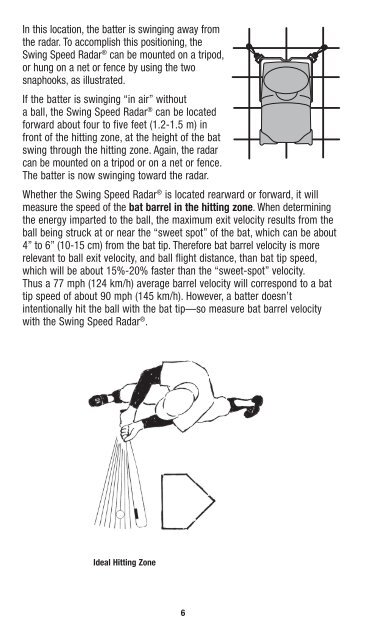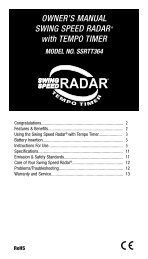You also want an ePaper? Increase the reach of your titles
YUMPU automatically turns print PDFs into web optimized ePapers that Google loves.
In this location, the batter is swinging away from<br />
the radar. To accomplish this positioning, the<br />
Swing Speed Radar ® can be mounted on a tripod,<br />
or hung on a net or fence by using the two<br />
snaphooks, as illustrated.<br />
If the batter is swinging “in air” without<br />
a ball, the Swing Speed Radar ® can be located<br />
forward about four to five feet (1.2-1.5 m) in<br />
front of the hitting zone, at the height of the bat<br />
swing through the hitting zone. Again, the radar<br />
can be mounted on a tripod or on a net or fence.<br />
The batter is now swinging toward the radar.<br />
Whether the Swing Speed Radar ® is located rearward or forward, it will<br />
measure the speed of the bat barrel in the hitting zone. When determining<br />
the energy imparted to the ball, the maximum exit velocity results from the<br />
ball being struck at or near the “sweet spot” of the bat, which can be about<br />
4” to 6” (10-15 cm) from the bat tip. Therefore bat barrel velocity is more<br />
relevant to ball exit velocity, and ball flight distance, than bat tip speed,<br />
which will be about 15%-20% faster than the “sweet-spot” velocity.<br />
Thus a 77 mph (124 km/h) average barrel velocity will correspond to a bat<br />
tip speed of about 90 mph (145 km/h). However, a batter doesn’t<br />
intentionally hit the ball with the bat tip—so measure bat barrel velocity<br />
with the Swing Speed Radar ® .<br />
Ideal Hitting Zone<br />
6



